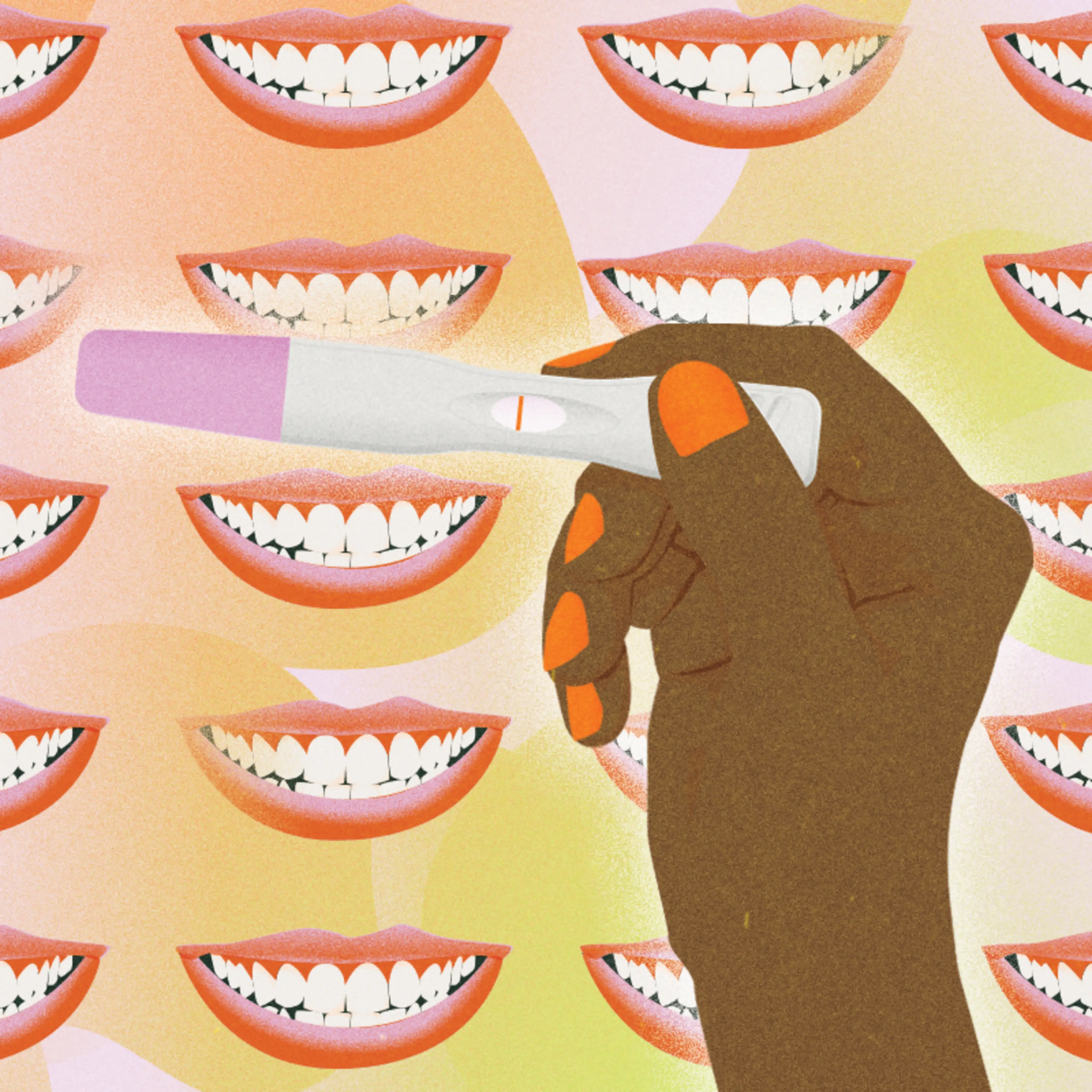TLDR: If you just started trying to get pregnant, you likely need a refresher on reproductive health because conceiving is all about timing. Tracking your cycle can help you figure out when you're most fertile, but first you have to learn the biggest myths about getting pregnant so you don’t make a few easy timing mistakes.
If you’ve spent your whole life trying to avoid pregnancy, it can be a big surprise to learn that getting pregnant isn’t always easy. For many women, trying to conceive is a frustrating experience that takes longer than expected. This is partially because you only have one window per month to get pregnant. So, one of the first things you’ll learn about conception is that you need to learn about your cycle.
“It’s very important to track your menstrual cycle when trying to conceive,” says Dr. Alexander Kucherov1 , a reproductive endocrinologist at Illume Fertility. “For most of your cycle, intercourse has a fairly low chance of leading to pregnancy. But if you know when ovulation is occurring, it can make timing things much easier.”
While tracking your cycle can be key to timing conception, before you learn how and what to track, we should go over some basics. For many, the last time you learned about female reproductive health was when you were a student in sex-ed class, so it might be time for a refresher. The best way to do that is busting some myths, so let’s go over the top five misconceptions about getting pregnant.
Misconception #1: Whenever you have sex, there’s at least some chance of getting pregnant.
Most people learned as teenagers that there’s at least a slim chance of getting pregnant any time you have sex. But this is simply not true. While men are fertile every day, women have only a few days each month when it’s possible to get pregnant: the day of ovulation and the five days before2 .
It can be hard to know with absolute certainty exactly when those six days fall for you—and they may not happen on the same days every month. However, tracking your cycle can help you narrow it down.
There are many different cycle tracking options available. Methods that take into account physiological data such as cervical mucus or body temperature offer greater accuracy because they are personalized to your body.
Misconception #2: To get pregnant, you must have sex or plan your insemination on the day you ovulate.
In contrast to the previous misconception, some people believe it’s only possible to get pregnant when you’re ovulating. But actually, the day of ovulation is not the best day to have sex when you’re trying to conceive.
In fact, research shows that getting pregnant is slightly more likely during the two to three days before ovulation3 compared to ovulation day itself. It’s best to think of ovulation as the end of your fertile window—not the best day to get pregnant, but the very last chance to try.
Misconception #3: Ovulation tests tell you your most fertile days.
Ovulation tests are urine tests that help you track your fertile days. They are also called ovulation predictor kits, OPKs or LH tests. These tests detect the presence of luteinizing hormone (LH) in your urine, which is a sign that you might be close to ovulating.
Using these tests can help you time intercourse around your fertile window. When you get a positive ovulation test, it’s a sign that you are likely fertile. But LH tests don’t always detect your most fertile days, which may fall before the ovulation test turns positive.
Ovulation occurs an average of 24 hours after the LH surge4 first begins, though this time can be shorter or longer for some people. As mentioned above, the best days to get pregnant are the two to three days before ovulation.
This means that if you wait for a positive ovulation test to have intercourse, you might be missing out on some of the most fertile days of your cycle5 . It’s best to think of the LH surge as the beginning of the end of your fertile window.
Misconception #4: Fertility-friendly lube can boost your chances of conceiving
Some research suggests that conventional vaginal lubricants can damage sperm6 and slow them down on their journey toward your egg. There are specially formulated “fertility-friendly” lubricants available for those trying to conceive, but it’s important to note that they don’t increase your chances of pregnancy. In fact, the only claim these products can make is that they are less harmful to sperm than conventional lubricants7 .
If you usually use lube during sex for comfort and pleasure reasons, you should switch to a fertility-friendly one during your fertile window. But if you can have sex easily and comfortably without lube, there’s no reason to add it to your routine because it doesn’t boost your fertility.
Misconception #5: You need to wait until your missed period to take a pregnancy test.
It’s usually recommended to wait to take a pregnancy test until your period is late. The reason for this is that most women don’t track their menstrual cycles, and therefore don’t know for sure when they ovulated.
But if you do know when you ovulated, you can absolutely take a pregnancy test earlier and still be confident in the answer. Here’s what you need to know
Pregnancy tests work by detecting the presence of the hormone hCG, which is only present in significant quantities in urine once the process of implantation is complete. Implantation can occur between 6–12 days after ovulation, but most often occurs 8–10 days8 after ovulation.
By one day after implantation, hCG levels in most pregnancies have risen above the minimum level detectable by the most sensitive home pregnancy tests.
Based on all this information, when can you take a pregnancy test and be confident in the result? Twelve days past ovulation, which for most women is several days before their period is due.
By 12 days past ovulation, the chances of getting a positive pregnancy test if you are truly pregnant are high. And the chances of getting a false negative pregnancy test, in case you’re pregnant but don’t yet have detectable hCG levels yet, are low.
While every person’s journey to having a baby is unique, understanding the science of fertility is a great first step toward increasing your chances of getting pregnant.












